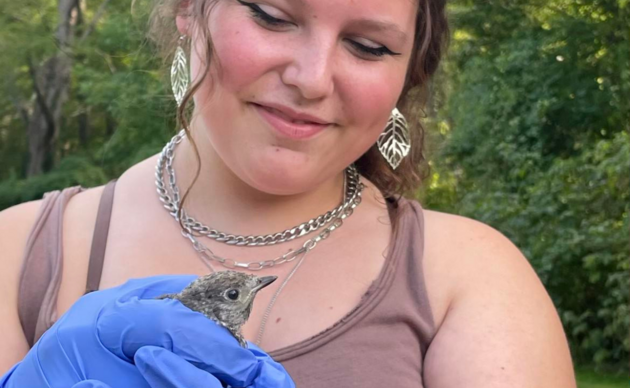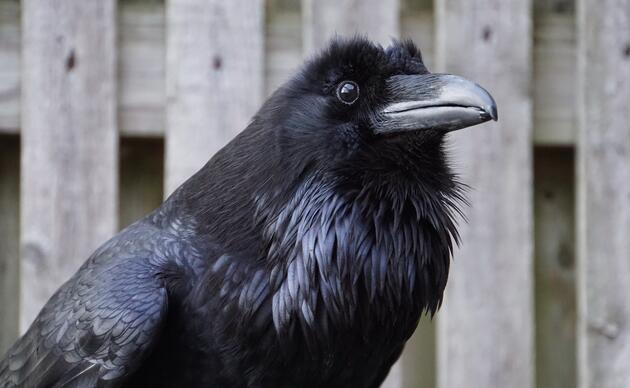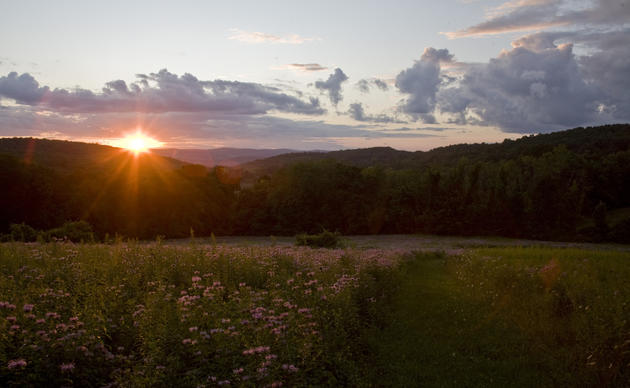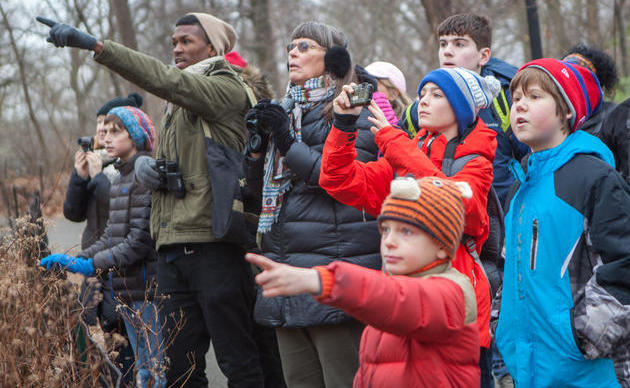Brought to Sharon Audubon Center: August 2008
History: Snappy is a temporary resident at the Sharon Audubon Center. He was found walking on the brick walkway just outside the Center's front door as a newly hatched turtle. Snappy will stay at the Center for a few years and will then be released into Ford Pond on the property. In the meantime, he will help teach about snapping turtle identification and adaptations in various education programs.
Common Snapping Turtle (Chelydra serpentina)
Did You Know? Unlike other turtle species, Snapping Turtles cannot hide in their shells for protection.
Description: A very distinctive turtle, the Common Snapper looks almost prehistoric with its large head and long ridged tail. The carapace is covered in several pronounced ridges that diminish with age and, on the underside, it has an unusually small plastron. Snapping Turtles have a sharp, pronounced beak and barbels on the chin. The feet of this turtle are webbed and heavily scaled with large claws.
Size: Up to 19 inches in length and over 85 lbs
Life Span: 30 years in the wild, more than 45 years in captivity
Diet: A primarily nocturnal, opportunistic hunters, Snapping Turtles are important scavengers that will eat just about anything, including dead plant and animal matter, fish, frogs, snakes, insects, even other turtles, and birds.
Habitat: These turtles prefer slow moving and shallow waters, though they may also be found in small streams and near the edge of large lakes.
Range: Snapping Turtles are found throughout southern and eastern Canada and east of the Rocky Mountains in the United States.
Other Notes: Often feared and misunderstood the Snapping turtle is generally timid in the water and will most often swim away to avoid a confrontation with humans. They do however deliver a powerful bite and should respected— especially when encountered on land where they have no easy escape route, and therefore, tend to stand their ground.
How you can help, right now
Learn & Explore
Where birds thrive, people prosper. Help us transform local communities into places where birds flourish. Learn what you can do to nurture wildlife, nature, and conservation in Connecticut.
Support Our Work
Through land stewardship, science, education, and advocacy, we work to preserve habitat and protect bird species that are of state, national, and global concern. Your gift makes a difference.
Join Our Family
When you become a member of Sharon Audubon Center, you are protecting critical woodlands and a natural heritage for generations to come. Help us do great things.





